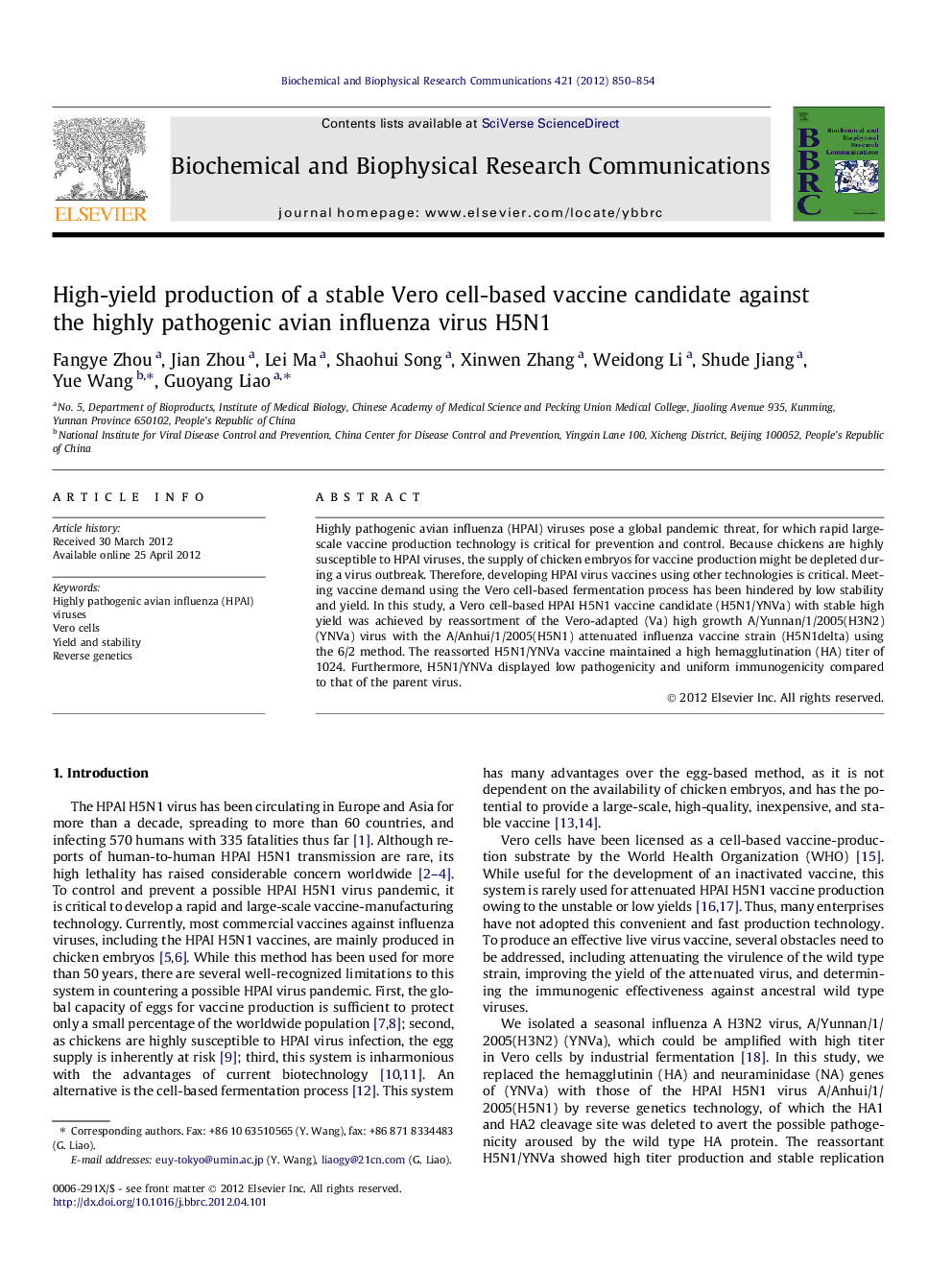| Article ID | Journal | Published Year | Pages | File Type |
|---|---|---|---|---|
| 1929784 | Biochemical and Biophysical Research Communications | 2012 | 5 Pages |
Highly pathogenic avian influenza (HPAI) viruses pose a global pandemic threat, for which rapid large-scale vaccine production technology is critical for prevention and control. Because chickens are highly susceptible to HPAI viruses, the supply of chicken embryos for vaccine production might be depleted during a virus outbreak. Therefore, developing HPAI virus vaccines using other technologies is critical. Meeting vaccine demand using the Vero cell-based fermentation process has been hindered by low stability and yield. In this study, a Vero cell-based HPAI H5N1 vaccine candidate (H5N1/YNVa) with stable high yield was achieved by reassortment of the Vero-adapted (Va) high growth A/Yunnan/1/2005(H3N2) (YNVa) virus with the A/Anhui/1/2005(H5N1) attenuated influenza vaccine strain (H5N1delta) using the 6/2 method. The reassorted H5N1/YNVa vaccine maintained a high hemagglutination (HA) titer of 1024. Furthermore, H5N1/YNVa displayed low pathogenicity and uniform immunogenicity compared to that of the parent virus.
► Vero cell-based HPAI H5N1 vaccine with stable high yield. ► Stable high yield derived from the YNVa H3N2 backbone. ► H5N1/YNVa has a similar safety and immunogenicity to H5N1delta.
